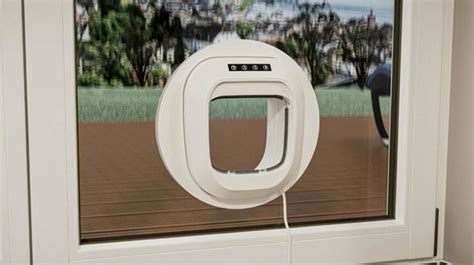Introduction

For cat owners seeking a seamless and secure way for their feline companions to enter and exit their homes, the traditional cat doors have long been a popular solution. However, with the advent of artificial intelligence (AI), a new generation of cat doors has emerged, promising even greater convenience, security, and peace of mind. In this article, we will explore the advantages and disadvantages of AI cat doors compared to traditional cat doors, providing insights into the latest technological advancements and how they can enhance the lives of both cats and their owners.
AI Cat Doors: The Ultimate Convenience
AI cat doors harness the power of computer vision and machine learning algorithms to automatically recognize and grant access to authorized cats. Unlike traditional cat doors that rely on a simple flap or magnetic collar, AI cat doors use sophisticated image analysis technology to identify and verify specific cats based on their physical characteristics. This advanced technology offers several key benefits:
- Selective Access: AI cat doors can be programmed to recognize multiple cats, allowing only authorized pets to enter and exit the home. This feature is particularly valuable for households with multiple pets or those concerned about keeping unwanted animals out.
- Real-Time Monitoring: Some AI cat doors come equipped with cameras and sensors that provide real-time monitoring of pet activity. Owners can receive notifications when their cat enters or exits, as well as view live footage of their pets’ comings and goings.
- Remote Control: Many AI cat doors can be controlled remotely via smartphone apps, allowing owners to lock or unlock the door from anywhere with an internet connection. This feature is ideal for pet owners who are away for extended periods or who simply want the convenience of controlling the door from their fingertips.
Traditional Cat Doors: A Simple and Affordable Solution
Traditional cat doors have been a mainstay in the pet market for decades, offering a simple and affordable way for cats to move freely between the indoors and outdoors. These doors typically consist of a plastic or metal flap that is attached to a wall or door and secured with screws or bolts. While traditional cat doors lack the advanced features of AI cat doors, they offer several advantages:
- Cost-Effective: Traditional cat doors are significantly less expensive than AI cat doors, making them a budget-friendly option for pet owners.
- Easy Installation: Most traditional cat doors are relatively easy to install, requiring only basic tools and DIY knowledge.
- Durability: Traditional cat doors are often made of durable materials such as plastic or metal, ensuring longevity and resistance to wear and tear.
Comparative Analysis: Exploring the Differences
To provide a comprehensive overview of the key differences between AI cat doors and traditional cat doors, we have created the following table:
| Feature | AI Cat Door | Traditional Cat Door |
|---|---|---|
| Access Control | Selective, based on facial recognition | Non-selective, allows any cat to pass |
| Monitoring | Real-time monitoring via cameras and sensors | No monitoring |
| Remote Control | Can be controlled remotely via smartphone app | Not supported |
| Installation | Requires professional installation | DIY installation |
| Cost | More expensive | Less expensive |
Market Insights: The Growing Demand for AI Cat Doors
The global pet care market is projected to reach $232 billion by 2025, with a significant portion of this growth being attributed to the rising popularity of AI technology in pet products. The convenience, security, and peace of mind offered by AI cat doors are driving increasing demand for these devices, as cat owners seek innovative solutions to enhance the well-being and safety of their beloved companions.
Future Trends: The Next Generation of AI Cat Doors
As AI technology continues to advance, we can expect to see even more innovative features and applications for AI cat doors in the future. Here are a few intriguing possibilities:
- Health Monitoring: AI cat doors could be equipped with sensors to monitor a cat’s temperature, heart rate, and other vital signs, providing early detection of potential health issues.
- Targeted Advertising: AI-powered cat doors could analyze a cat’s behavior and preferences, allowing pet owners to receive targeted advertising for relevant products and services.
- Integration with Smart Home Systems: AI cat doors could be integrated with smart home systems, allowing owners to control the door, receive notifications, and access other pet-related information from a central hub.
Conclusion
AI cat doors and traditional cat doors both offer unique benefits and drawbacks, and the choice between the two ultimately depends on the individual needs and preferences of pet owners. AI cat doors provide superior convenience, security, and peace of mind, while traditional cat doors remain a cost-effective and easy-to-install option. As technology continues to evolve, we can expect to see even more innovative features and applications for AI cat doors, further enhancing the bond between cats and their owners.





















